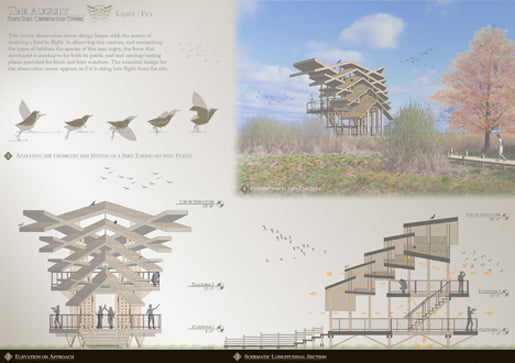The Augury
Conceived in Philadelphia (Fly Eagles, Fly!!!)
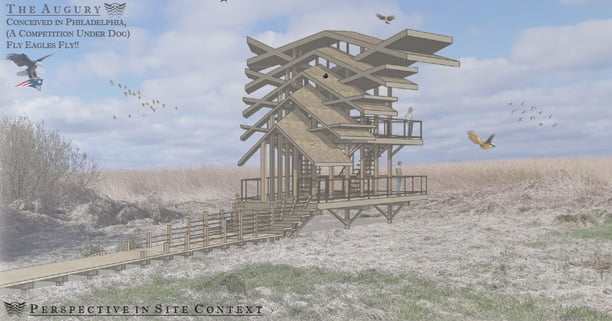
“The Augury” took flight as a design challenge and an intellectually stimulating endeavor. Part of an international competition, the design called for a new bird observation tower in a nature preserve in Latvia. Pape Park, home to five ecosystems (lake, meadow, marsh, dunes and forest), is famous for its rich wildlife, with 50,000 migrating birds of 250 different species passing by each year. The design for the new tower would replace the previous deck that had sadly burned down after being struck by lightning. The budget was lean: $50,000 to $100,000.
Tasked with creating an “iconic” bird-watching tower, Nick Grimaldi, architectural associate at the OMNIA Group Architects, became fascinated with the idea of replicating a bird’s wings in flight. The idea lightbulb had turned brilliantly on.
Flight, Frozen in Motion
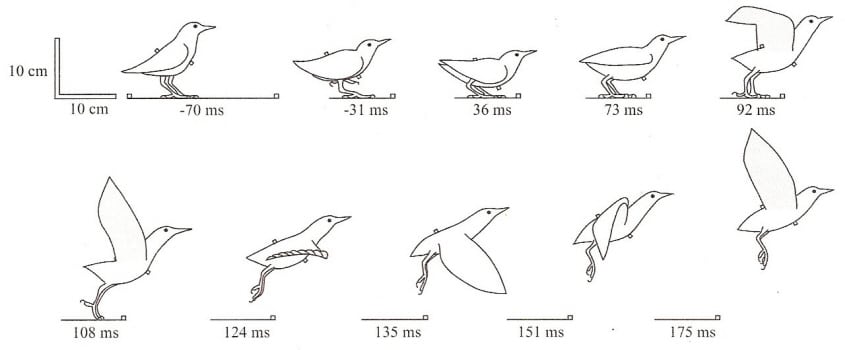
Now for the hard part … making the wings look like they were actually flapping. The expression of motion through inanimate architecture is not an easy feat, especially on a tight budget. For inspiration, Nick looked at the works of renowned Spanish architect Santiago Calatrava, who has a singular talent for making tons of steel and glass appear feathery light and in motion.
Nick recalls, “I had the down sloping ‘wing’ roofs figured out, but there was not much sense of movement.” He remembers the “aha” moment after pulling in his co-worker, architectural associate Rachel Landsberger, to collaborate about his design dilemma. “Rachel and I started brainstorming about how to achieve more motion. That is when the inverted roofs took shape to interact with the peaked roofs, and the whole thing started to fly.”
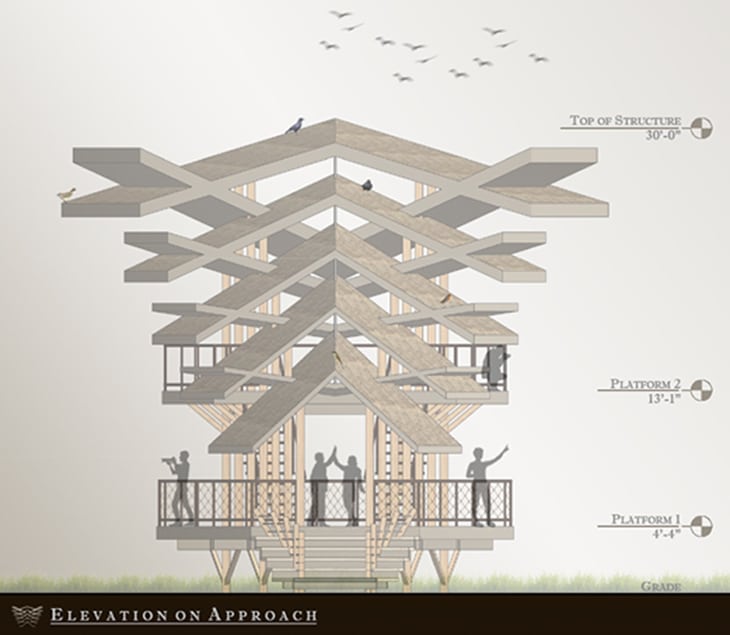
More Inspiration, from Ancient Rome
The name of Nick and Rachel’s tower is as intriguing as the design itself: “The Augury.” If you forgot your ancient Roman studies, an “augur” was a religious official who observed and interpreted natural signs, especially bird behavior, as an indication of divine approval or disapproval. An “augury” is literally an omen or judgment that the birds’ behavior has prophesied. Nick and Rachel’s modern interpretation of “augury” is a perfect place to provide a connection with the ancient practice of observing bird behavior, while finding deeper meaning in wildlife and nature.
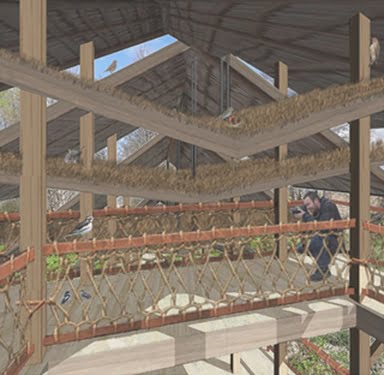
Up Close & Personal
The Augury offers a unique experience for watching birds because the structure itself becomes a bird habitat. The layered and staggered roofs, and the nooks and crannies in between, make perfect places for birds to roost, nest and feed. From the lower deck, you can observe 360 degrees of surrounding wetlands and forest. The upper deck offers an elevated view outward, as well as into the inverted, thatched roofs where birds perch and feed, giving watchers a rare, close-up view. The Augury is the final destination at the end of a raised, wooden walkway through the wetlands … an enchanting vantage point for witnessing nature’s magic.
Native & Natural
The Augury is constructed of sustainable materials native to the area so that birds see it as a natural part of the landscape. No metal is envisioned for this structure made mostly of oak, with a black alder foundation that is naturally resistant to ground water. The railings are birch rope, and the thatched roofs are made of water reeds. The materials can be adapted for any local area. For the birds, the tower looks almost like a funky tree with protected niches for nesting and feeding.
An Augury for Anywhere
Even though “The Augury” did not win the competition, this design would be a winner almost anywhere where people watch wildlife and appreciate nature. It is simple, yet complex, timeless and iconic. Its true brilliance lies in its ability to mimic a bird’s flight, while being completely inanimate … a soaring achievement in anybody’s book.
